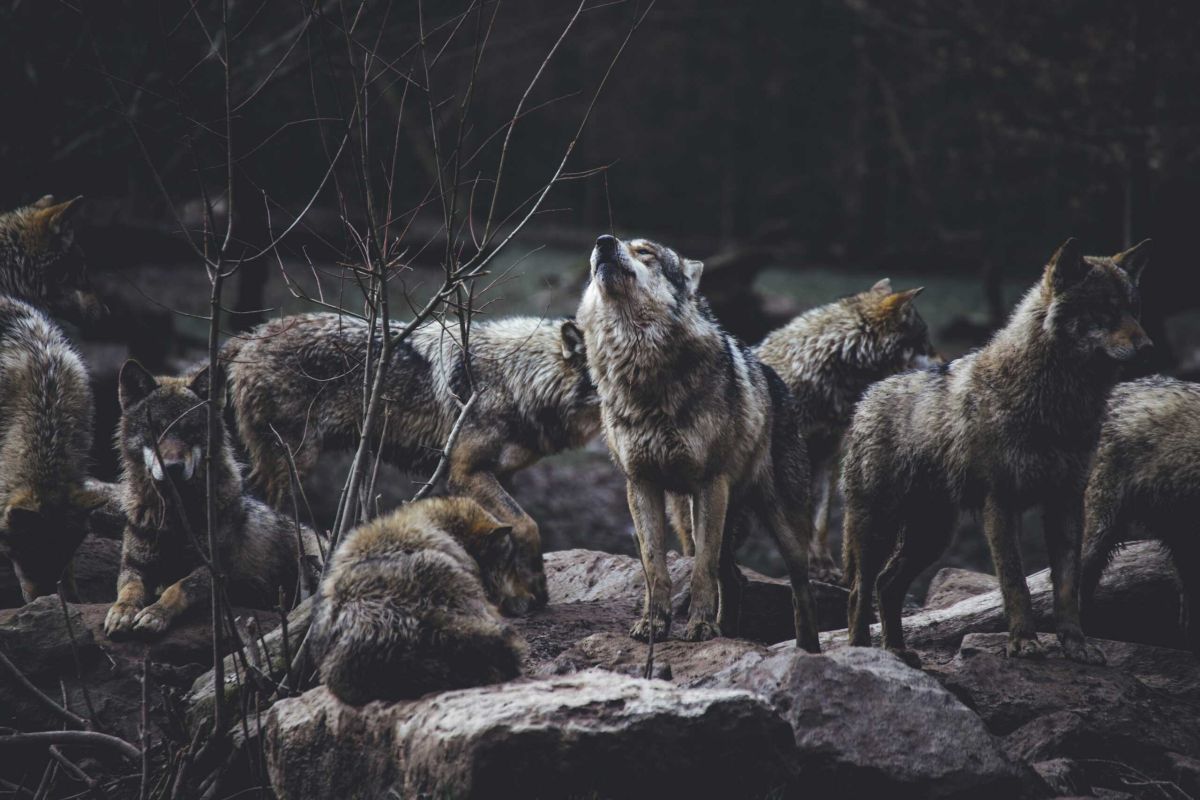Understanding the Wolf Pack: Nature’s Social Structure

Wolves, often revered in folklore and popular culture, are fascinating creatures that exhibit complex behaviors and social structures, most notably displayed in the formation of a wolf pack. These packs are not just groups of wolves; they are intricate social units that function with a unique dynamic essential for their survival and success as a species.
The Structure of a Wolf Pack
A wolf pack typically consists of a family unit dominated by a breeding pair known as the “alpha” male and female. This pair leads the pack, fostering social cohesion and coordinating activities such as hunting, pup-rearing, and territory defense. The average size of a pack varies significantly, ranging from just a few individuals to as many as twenty or more, depending largely on the availability of prey, habitat, and environmental conditions.
Within the pack’s hierarchy, subordinates respect the alpha pair’s authority, which plays a crucial role in maintaining order and preventing conflicts. The structure is essential not only for social stability but also for effective hunting strategies. By working together, pack members can take down larger prey than an individual wolf could manage alone, enhancing the pack’s chances of survival.
Social Dynamics and Behavior
Social interactions among wolves are marked by a series of vocalizations, body language, and rituals that help reinforce pack bonds. Howling is perhaps the most famous vocalization associated with wolves, serving multiple purposes:
- Communication: It allows wolves to locate each other over great distances, especially during hunts or when roaming their territory.
- Territorial Claiming: Howls can also serve as a warning signal to neighboring packs, delineating territory boundaries and reducing potential conflicts.
- Self-Identification: Individuals howl to announce their presence and solidarity within the pack.
Grooming behaviors are also common, strengthening social ties among pack members and promoting group cohesion. These interactions help establish relationships that facilitate cooperative behaviors essential for hunting and protection.
Hunting and Survival
The cooperative nature of wolf packs is most evidently demonstrated in their hunting strategies. Working together, they can coordinate ambushes or chase and tire out larger prey, such as elk or bison. This not only increases the success rate of hunts but also enhances food security for the entire pack.
Packs usually employ various tactics depending on the prey’s size and behavior. For instance, while hunting smaller prey, wolves may use stealth and surprise. In contrast, during larger hunts, they will communicate and move in unison, distracting and dividing their target to make the hunt more manageable. This collaborative behavior highlights the adaptability and intelligence of wolf packs as they navigate different environments and prey types.
Reproduction and Rearing of Young
The alpha pair typically monopolizes reproduction within the pack, ensuring that the strongest and most fit genes are passed on to the next generation. After a gestation period of about 63 days, the female typically gives birth to a litter of four to seven pups. The entire pack participates in rearing the young, showcasing a high level of social responsibility.
Pups are born blind and helpless, relying on the adults for food, protection, and learning survival skills. As they grow, older pack members play a crucial role in teaching the young wolves essential hunting techniques and social behaviors. This communal investment in raising pups not only strengthens pack bonds but also ensures that future generations are well-prepared for life in the wild.
Conclusion
The wolf pack is a remarkable example of social cooperation in the animal kingdom. Through strategic partnerships, intricate social structures, and effective communication, wolves embody the essence of community living. Their ability to thrive in diverse environments speaks to the evolutionary advantages of living in packs, and their behaviors offer profound insights into social dynamics that continue to captivate researchers and wildlife enthusiasts alike. Understanding wolf packs helps us appreciate the complexity of life in the wild and the innate interconnectedness among species, reinforcing the critical importance of conservation efforts to protect these essential predators and their habitats.



